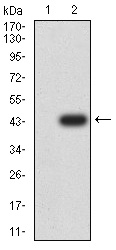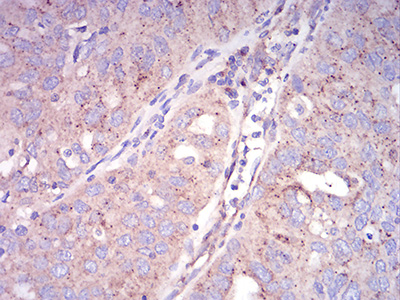WD-repeats are motifs that are found in a variety of proteins and are characterized by a conserved core of 40-60 amino acids that commonly form a tertiary propeller structure. While proteins that contain WD-repeats participate in a wide range of cellular functions, they are generally involved in regulatory mechanisms concerning chromatin assembly, cell cycle control, signal transduction, RNA processing, apoptosis and vesicular trafficking. Sec31A, also known as ABP125, ABP130 or SEC31L1, is a 1,220 amino acid protein that contains seven WD repeats and localizes to the cytoplasm and to cytoplasmic vesicles, as well as to the membrane of the endoplasmic reticulum (ER). Expressed ubiquitously at high levels, Sec31A functions as a component of the COP II (coat protein II) complex and, working in tandem with other proteins, promotes the formation of ER transport vesicles and aids in the selection of cargo molecules. Chromosomal aberrations that involve the Sec31A gene are associated with inflammatory myofibroblastic tumors (IMTs), suggesting a role for Sec31A in carcinogenesis. Multiple isoforms of Sec31A exist due to alternative splicing events.



